Tools of the Trade

The CBC looks for a theme to spotlight in each month’s Hot Off the Press list so that we can alert parents, teachers, librarians, booksellers, and all children’s book enthusiasts to cool new offerings from our member publishers.
One of the challenges that nonfiction children’s book authors face is how to present their material in an accessible, engaging format. A particularly effective method is to use call outs, sidebars, and breakout boxes—essentially separate text boxes set off from the main text—to provide additional information or emphasize certain facts in bite-sized pieces. Another is to use spot illustrations—standalone images or diagrams used to highlight details from the main text and add visual interest. Our March Hot Off the Press list features a number of phenomenal, new nonfiction titles that use these tools to pull readers in and deliver a fascinating learning experience for all ages.
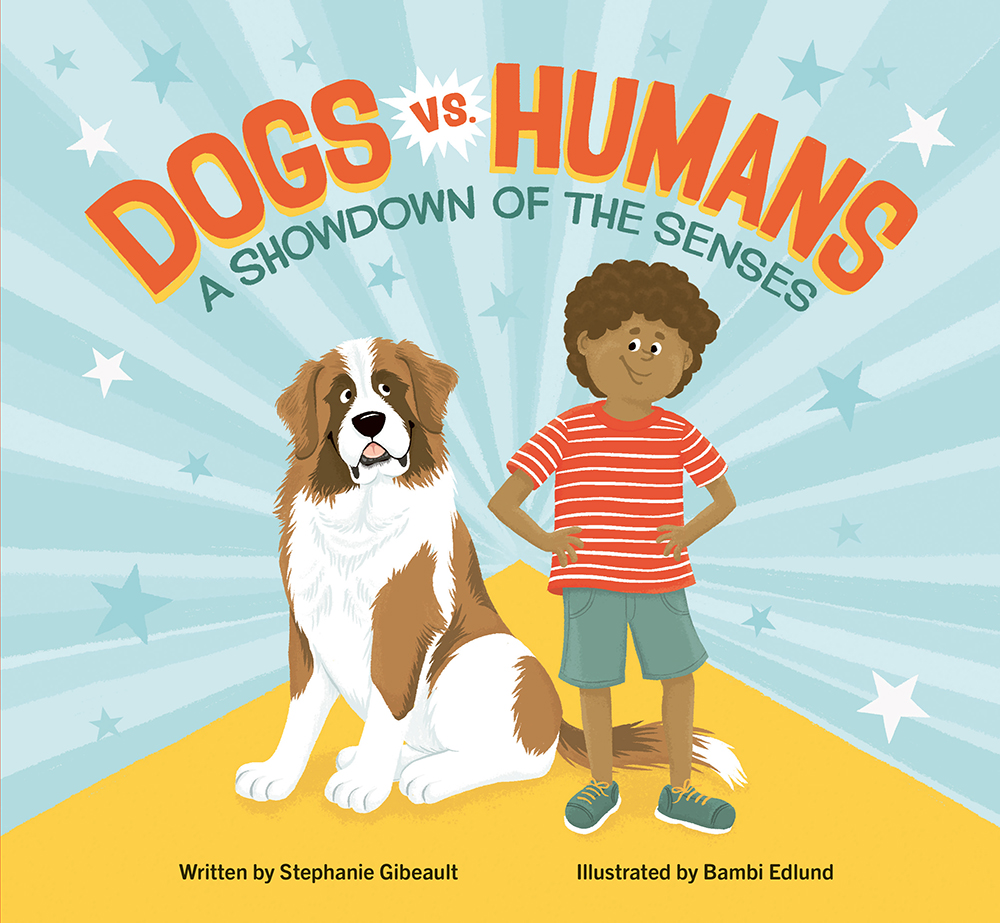
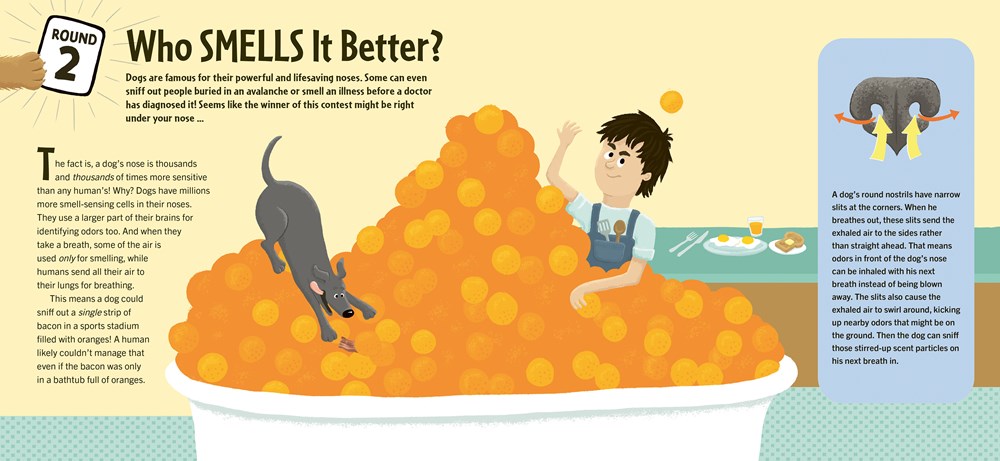
Dogs vs. Humans: A Showdown of the Senses, by Stephanie Gibeault; illustrated by Bambi Edlund (Owlkids Books) — Animals, Science / Nature, Facts / Trivia, ages 7-12.
Whose five senses are superior: dogs or humans?
In a showdown of the senses, who would come out as top dog: canines or humans? This junior nonfiction book for ages 6 to 9 creates a fierce but fun competition, comparing the ways dogs and humans perceive the world through each of the five senses: sight, smell, taste, touch, and hearing.
As dogs and humans are playfully pitted against each other, with one round for each sense, young readers will discover the scientific and evolutionary explanations behind our differences. It’s a close race! Humans win for sight, with better depth perception, distance, and color vision. But dogs are stronger sniffers–with their noses, some can even locate people buried in an avalanche or detect an illness before a doctor has diagnosed it. And the winner is … Well, in the end, it’s a tie!
With lively, cartoon-style illustrations, this book is an engaging and informative introduction to dog behavior that can help kids better understand and appreciate their canine companions.
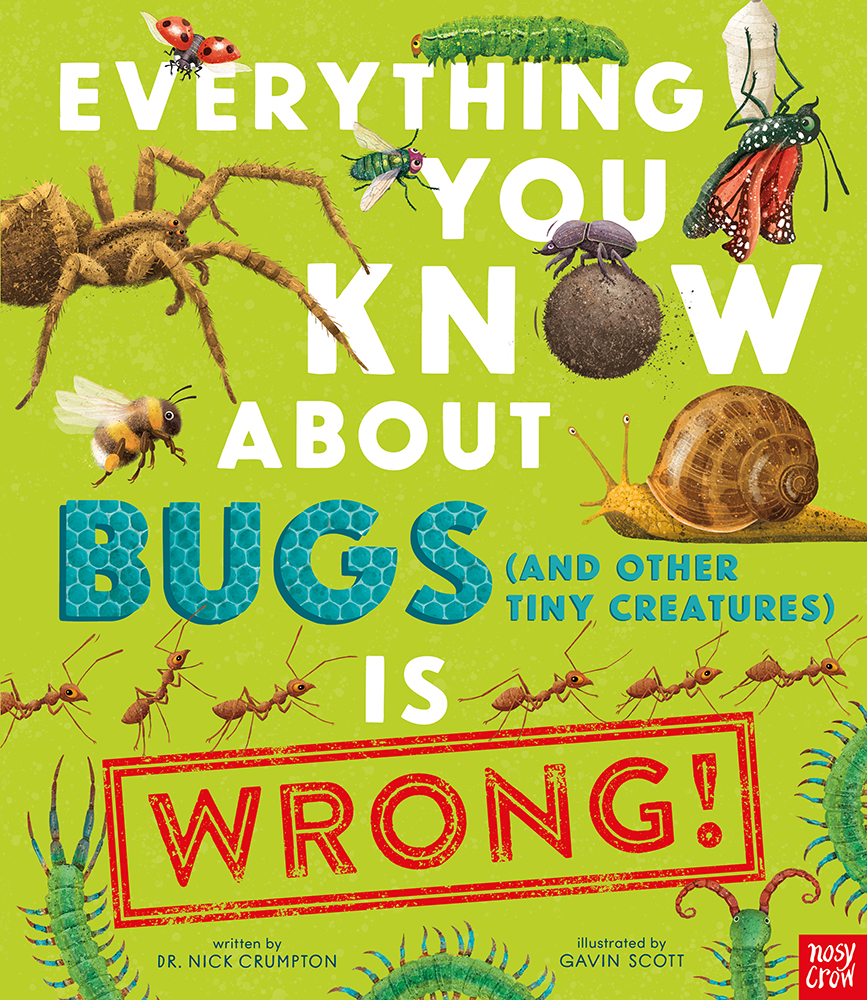
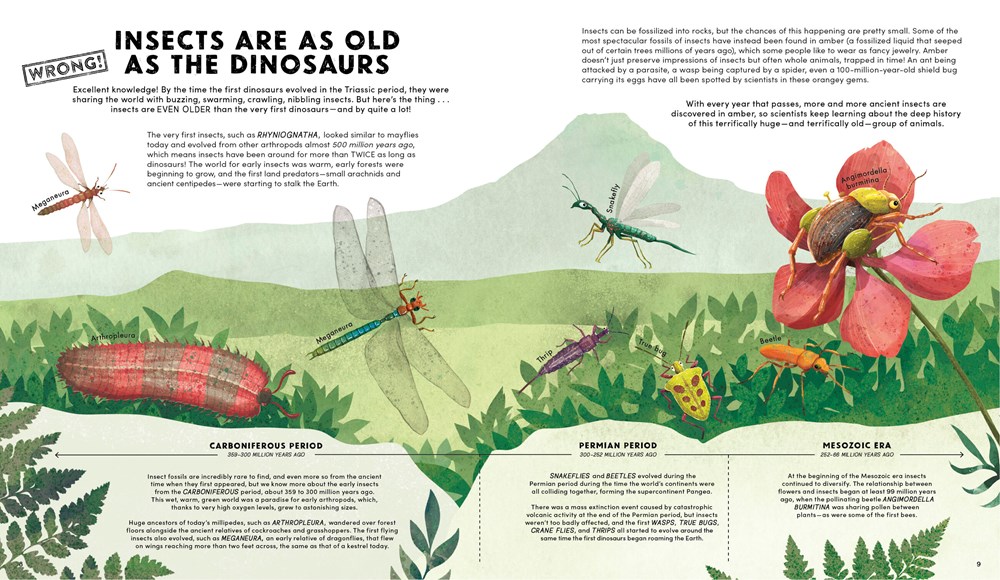
Everything You Know About Bugs (and other tiny creatures) is Wrong!, by Dr. Nick Crumpton; illustrated by Gavin Scott (Nosy Crow ) — Science / Nature, Animals, Facts / Trivia, Places / Travel, ages 7-12.
Fans of all things creepy-crawly will become experts on insects and other tiny creatures with this informative, inventive, and entertaining nonfiction book!
Do you know all there is to know about insects and other tiny creatures? Bees die when they sting you, centipedes have 100 legs, and cockroaches are indestructible, right?
Well, this book is here to show you that you’re WRONG! But don’t worry, there are so many bugs and other creepy-crawlies out there it’s impossible to know everything about all of them . . .
So, let’s uncover the truth! From incredible insect architects to eating spiders in your sleep, discover how everything you think you know about creepy-crawlies is actually untrue in this in-depth, ingenious book which debunks many common myths.
With fascinating, friendly, and easy-to-understand text written by zoologist Dr. Nick Crumpton, amazingly detailed color artwork by Gavin Scott, and a stunning tactile cover, this book will impress insect fans of any age.

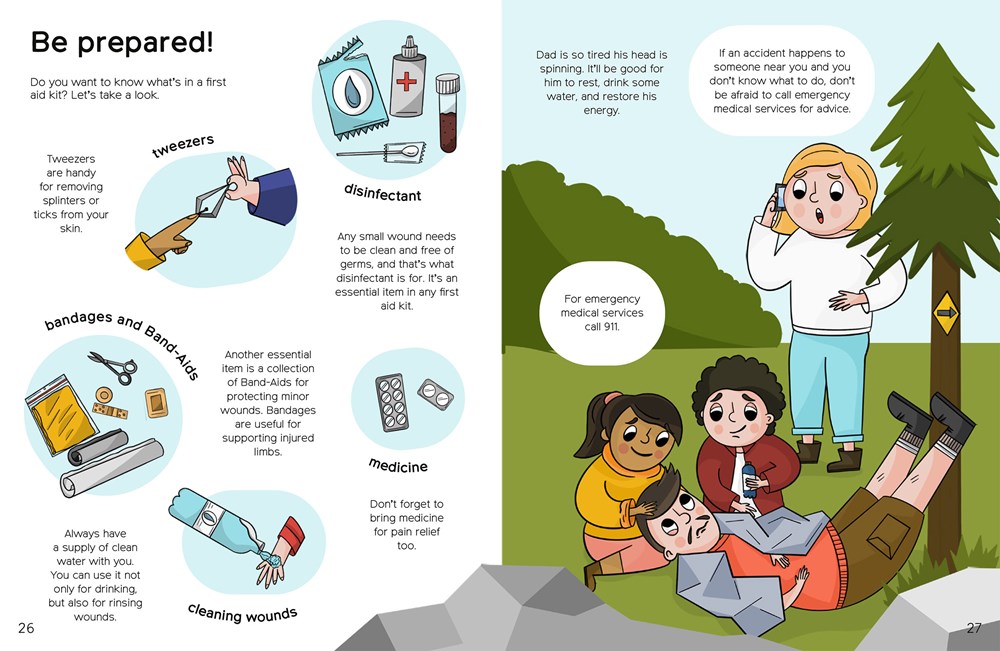
Hiking 101: Tips and Advice for Little Campers, written & illustrated by Hedviga Gutierrez (Albatros Books) — Sports / Games / Recreation, Social Emotional Learning, How-to / Activity, Facts / Trivia, ages 7-12.
An interactive guide for young explorers that imparts essential outdoor skills, safety tips, and exciting challenges, ensuring a memorable hiking experience.
Hiking 101: Tips and Advice for Little Campers is the ultimate guide for young adventurers, designed to transform every hike into an exciting journey of discovery. Set against the backdrop of the picturesque countryside, this book takes kids on an interactive learning adventure. In nine comprehensive chapters, it covers essential adventure skills, from choosing the right gear to mastering map reading and efficient packing. The narrative unfolds through engaging characters who lead young readers through challenges, providing practical insights into handling outdoor escapades with confidence. Simple first-aid tips, nature-savvy problem-solving, and hands-on activities make this guide an indispensable companion for anyone gearing up for a one-day hiking trip. Ideal for ages 6-9, Hiking 101 is not just a book–it’s an invitation to unlock the spirit of exploration within young minds. Packed with adventure essentials, interactive challenges, and useful information like a packing list, it ensures that kids are well-prepared for their outdoor endeavors. Crafted with round corners and a compact size, it snugly fits into backpacks, making it the ideal companion for young adventurers on the go. Whether a beginner or an aspiring young explorer, this guide encourages a deep connection with nature, fostering skills that go beyond the trails. The perfect blend of education and adventure, Hiking 101 promises to instill a love for the great outdoors, making it a must-have addition to every young adventurer’s library.
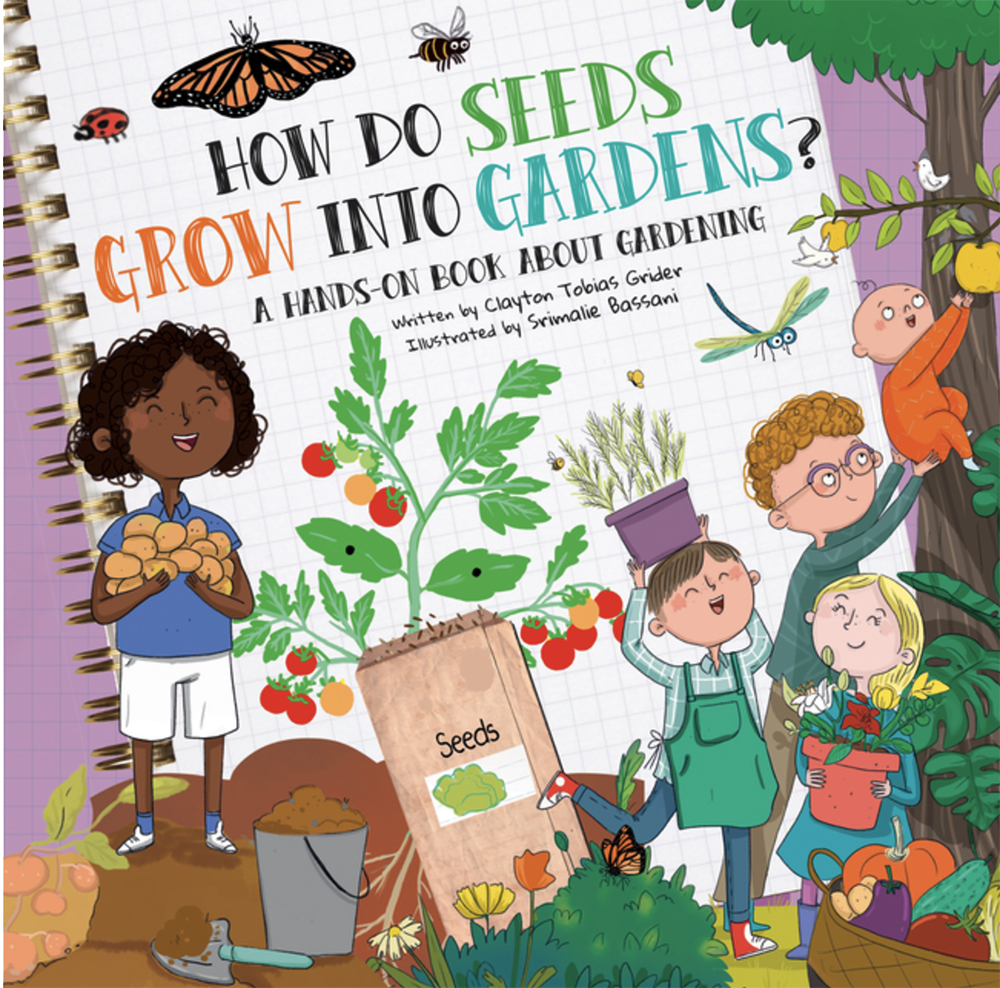
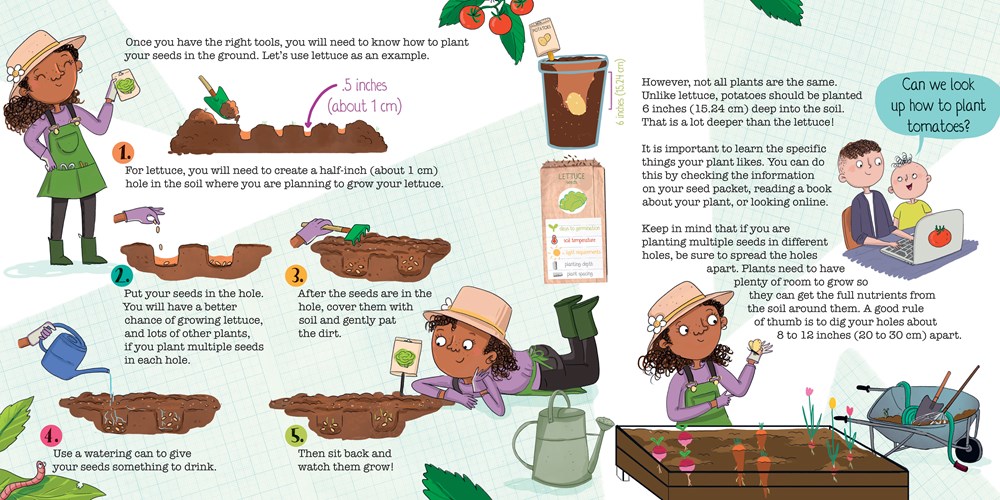
How do Seeds Grow into Gardens?, by Clayton Grider; illustrated by Srimalie Bassani (Flowerpot Press) — Science / Nature, How-to / Activity, Facts / Trivia, ages 4-6.
Have you ever wondered how entire gardens can grow from teeny tiny seeds? A basic explanation of growing popular vegetables, the plant life cycle, and unique gardening methods is explored through simple diagrams, hilarious illustrations, and informative and engaging text in this exciting gardening adventure. Includes fun gardening activities and a glossary!
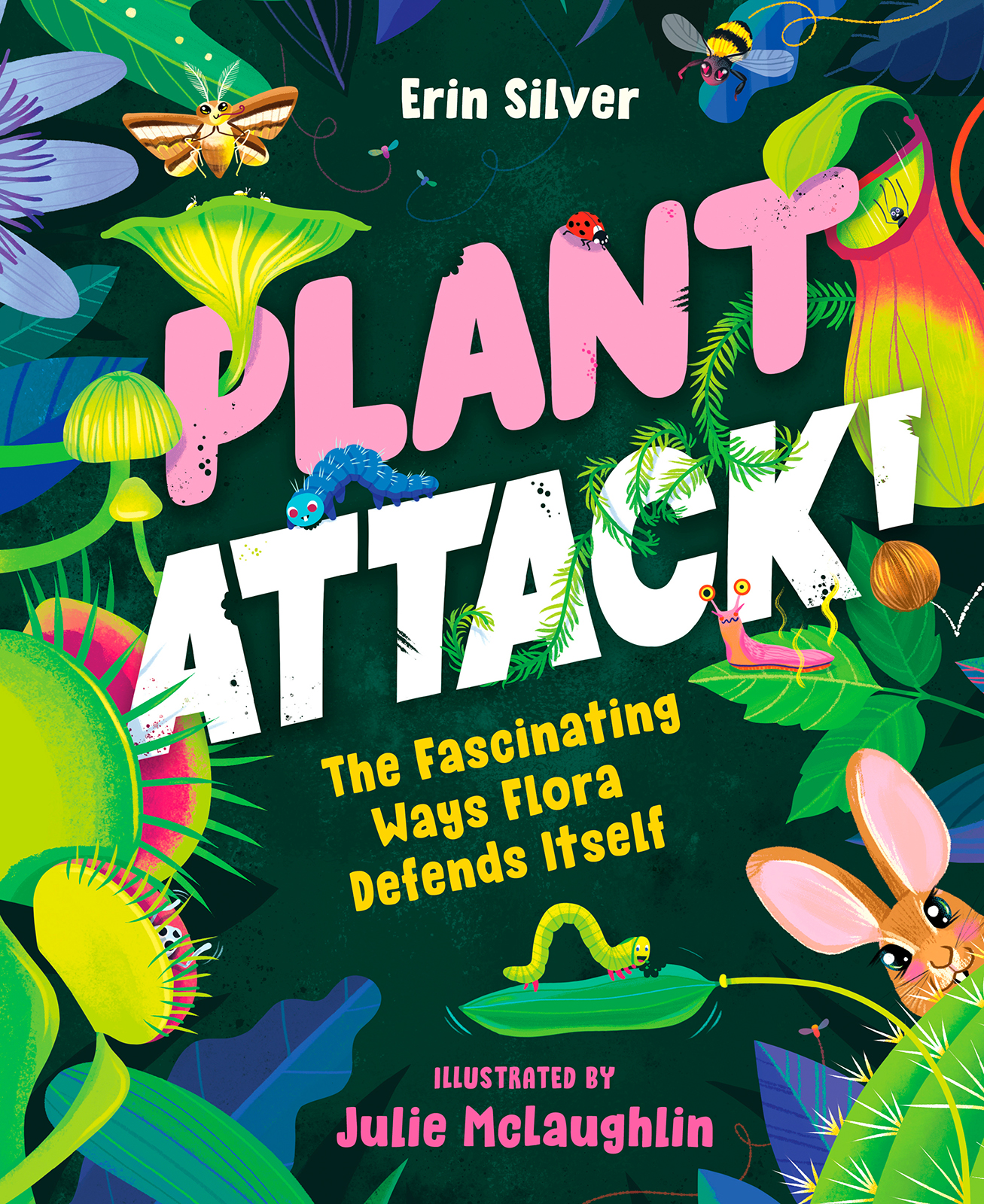
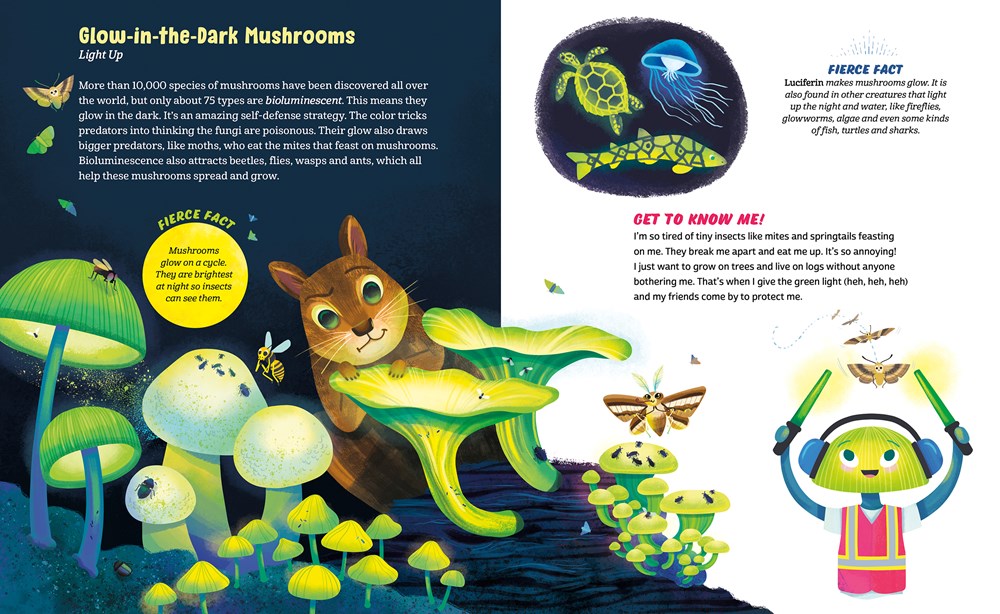
Plant Attack! The Fascinating Ways Flora Defends Itself, by Erin Silver; illustrated by Julie McLaughlin (Orca Book Publishers) — Science / Nature, Environment / Sustainability / Recycling, Facts / Trivia, ages 4-6.
Just like people and animals, plants need to defend themselves.
They can’t scream or run away from danger, but many have developed surprisingly cool and courageous ways to keep themselves safe from pesky bugs, hungry animals, and even large-clawed crabs. Plants can stab, poison, drown, and even suffocate their predators. Discover the corpse flower, which smells like a combination of rotting wounds, garlic, chees,e and sour sweat. Then there is the touch-me-not balsam that explodes, flinging anything that touches it through the air. Plant Attack! The Fascinating Ways Flora Defend Themselves explores 15 different plants and the unique, and sometimes bizarre, ways they defend themselves from predators, including us.
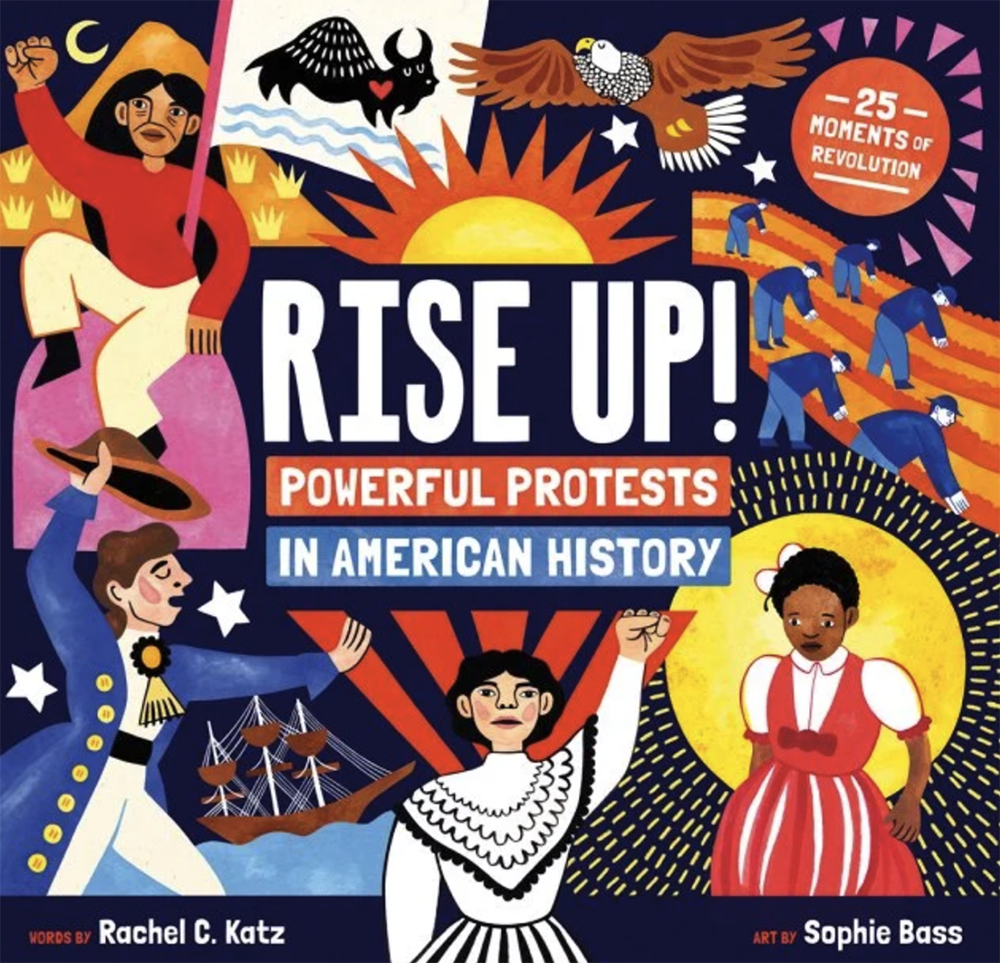
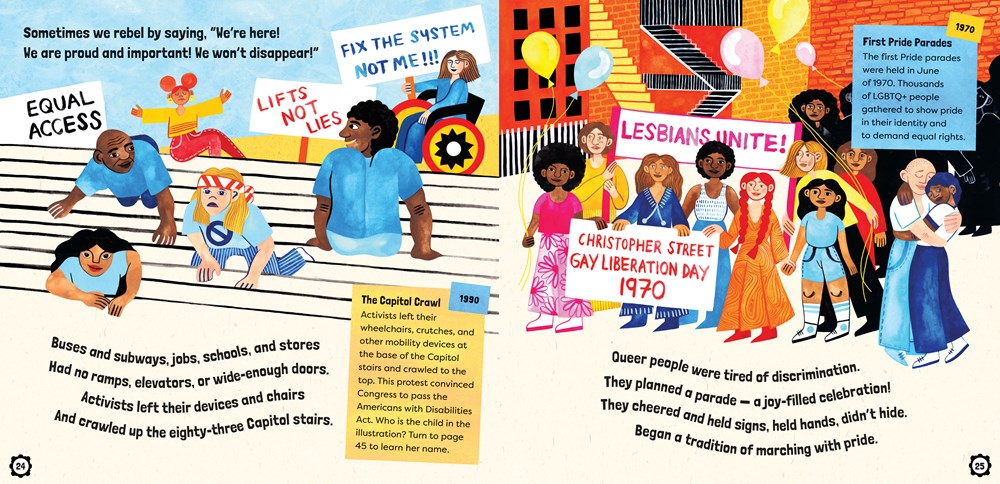
Rise Up! Powerful Protests in American History, by Rachel C. Katz; illustrated by Sophie Bass (Barefoot Books) — Social Activism / Equality / Feminism, Biography / Memoir, History, Places / Travel, ages 7-12.
Throughout our long history, when something’s unfair
When rights need expanding, or wrongs need repair
Americans argue. We march and we cheer.
We write songs and speeches. We go volunteer.
From the Boston Tea Party to the Capitol Crawl, inspire young activists in this bold nonfiction picture book that explores 25 moments of protest, resistance, and revolution throughout American history. In a powerful celebration of the United States’ 250th birthday, teach kids how we campaign and vote. We challenge tradition. Protest is American by definition!
- Lyrical text inspires young readers to make change in the world
- Info boxes on each page support learning
- 14 pages of endmatter includes a timeline and map of the 25 protests, and dives deeper into each event to further learning beyond the book
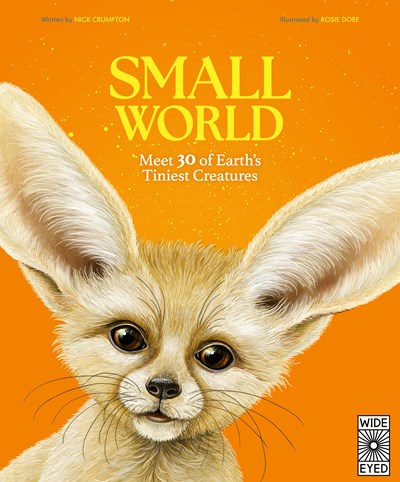
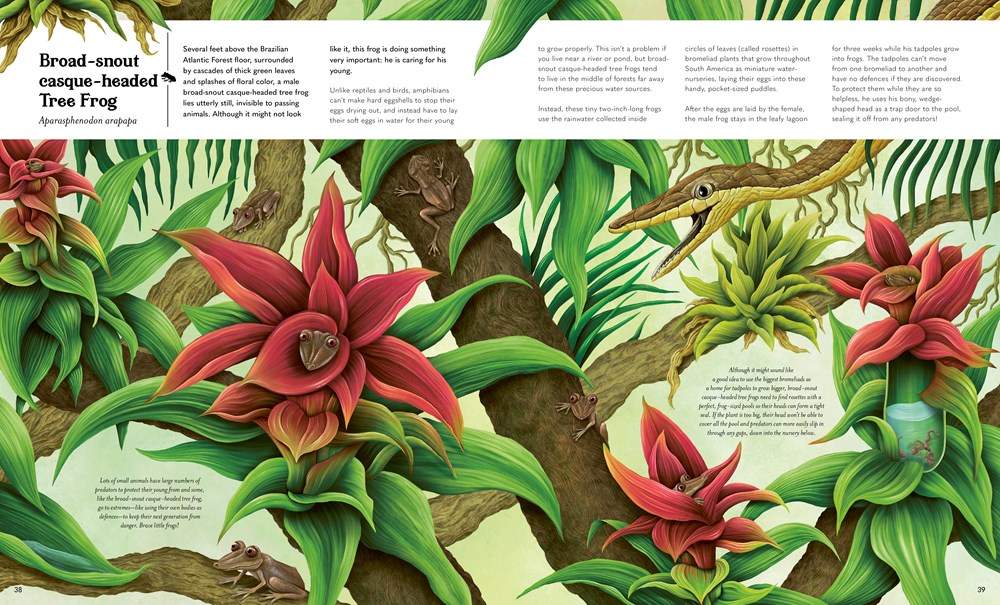
Small World, by Nick Crumpton; illustrated by Rosie Dore (The Quarto Group / Wide Eyed Editions) — Science / Nature, Animals, Facts / Trivia, ages 7-12.
Who can resist teeny tiny animals? From a tortoise that could fit in your palm, to a crab no bigger than your fingernail – this big and beautiful book is dedicated to tiny animals from around the world.
Turn the pages and set off on your adventure, meeting nature’s smallest creatures and taking a peek into their little – but very lovable – lives. These animals may be mini, but their stories are mighty!
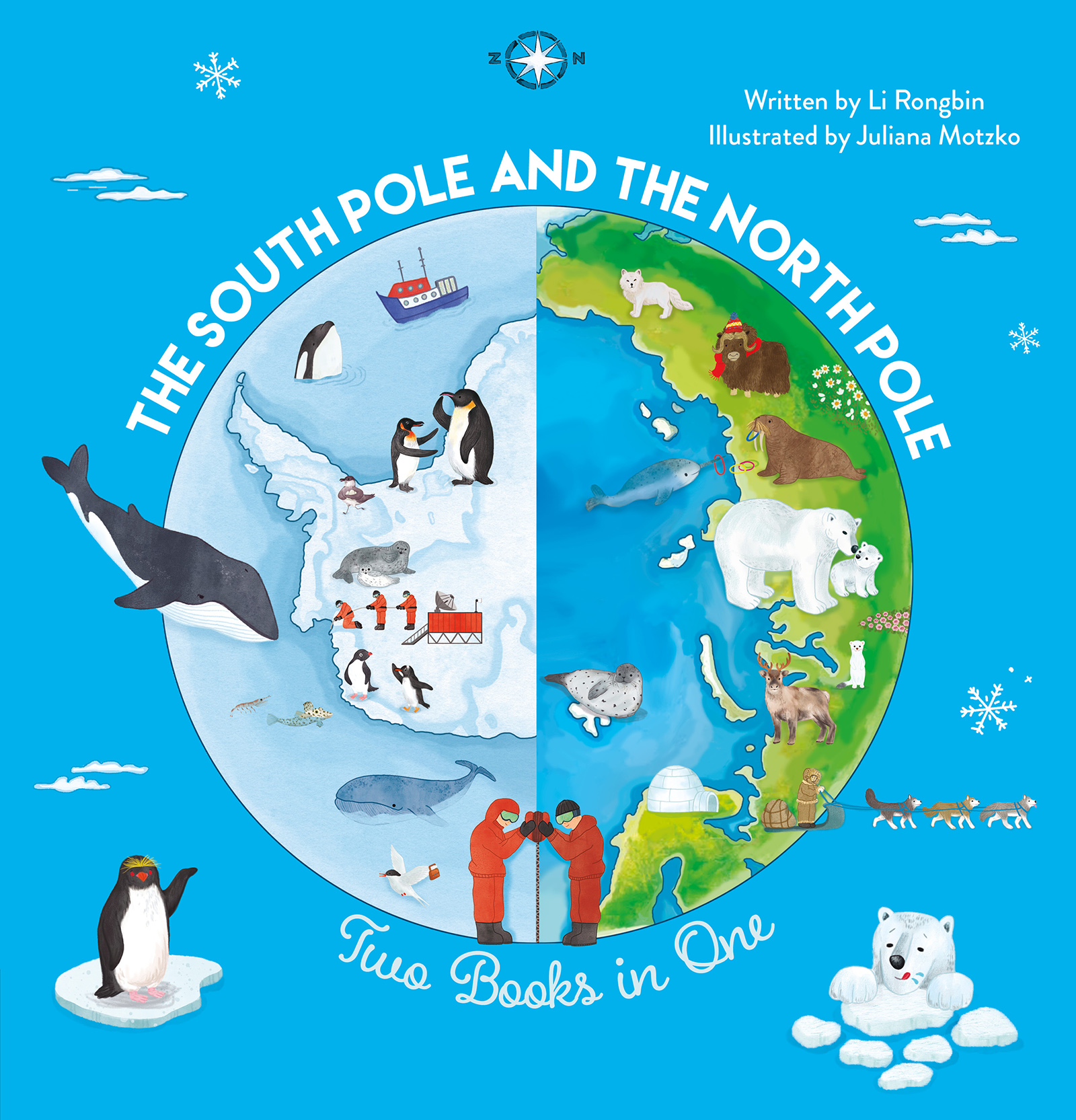
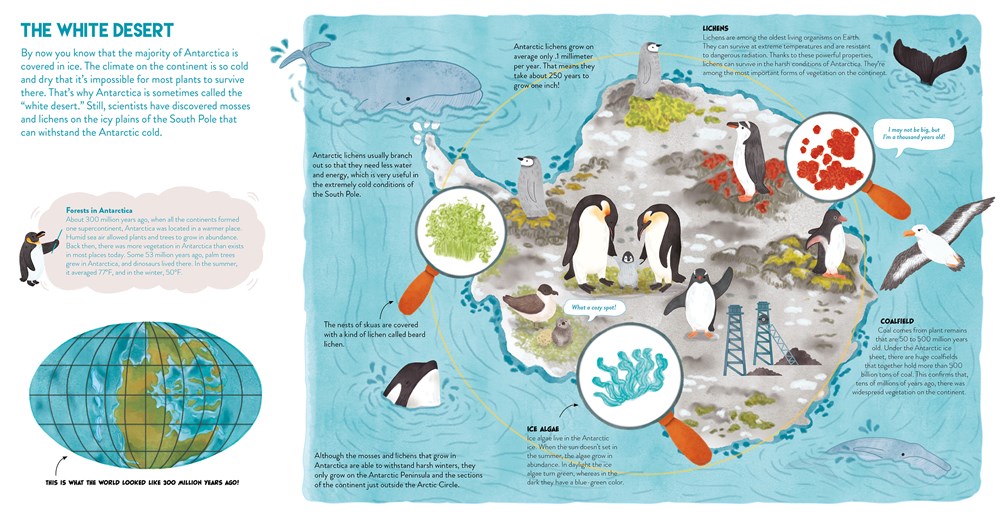
The South Pole and the North Pole. Two Books into One, by Li Rongbin; illustrated by Juliana Motzko (Clavis) — Science / Nature, Places / Travel, Animals, Facts / Trivia, ages 7-12.
The South Pole and the North Pole is a fascinating and interactive picture book that takes young readers on an exciting journey to explore the similarities and differences between the Earth’s two polar regions. While both the North and South Poles are freezing cold, they are home to very different wildlife and landscapes.
Discover the unique habitats of penguins and polar bears, and learn about the geography, flora, and fauna that make each pole special.
This one-of-a-kind book by debut author Li Rongbin and debut illustrator Motzko Juliana is designed with two sides–one for the South Pole and one for the North Pole–allowing readers to explore both poles at the same time.
Perfect for curious young scientists aged 5 and up, The South Pole and the North Pole is packed with educational content, making it ideal for the classroom, library, or for children interested in natural science and geography. This innovative two-in-one book is both a fun adventure and a valuable learning tool!
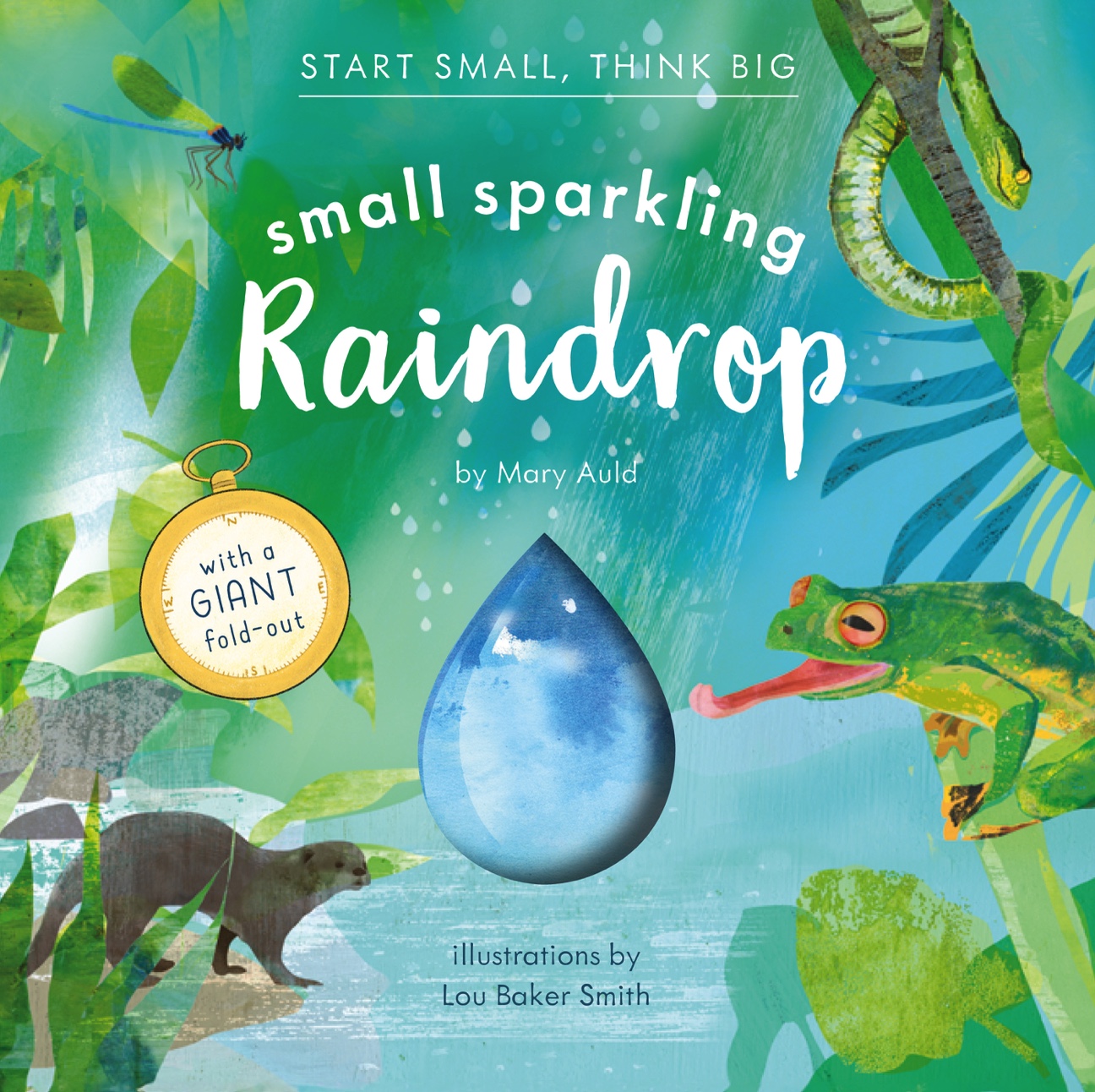
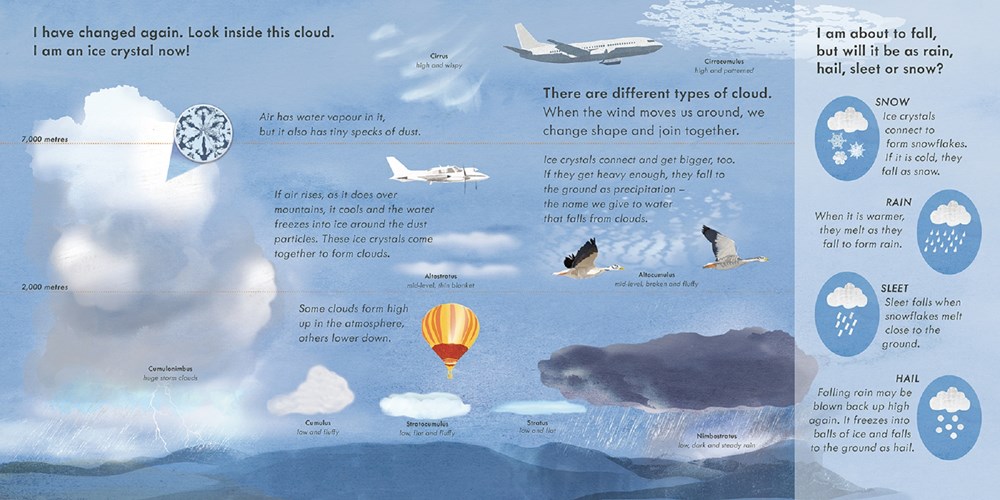
Start Small, Think Big: Small Sparkling Raindrop, by Mary Auld; illustrated by Lou Baker Smith (Red Comet Press) — Science / Nature, Environment / Sustainability / Recycling, STEM / STEAM, Facts / Trivia, ages 7-12.
Follow a small sparkling raindrop falling from a cloud and learn about the journey it takes and the contribution it makes to the ecosystems of our mountains, rivers, and seas.
Start Small, Think Big is a series that sets readers on a journey of discovery, beginning from the small and familiar to new areas of knowledge where you really have to think big!
Small Sparkling Raindrop starts with a raindrop falling from a cloud, the beginning of its journey to the sea. It lands on a mountainside in southeast Asia and rolls down the mountain to join the mighty Mekong River. This is the story of the water cycle and other key elementary-grade science topics, including its impact on the land and how vital it is for all living things on Earth. Thinking big, the book shows why clean, healthy rivers are vital for people and wildlife, including the critically endangered Irawaddy dolphin threatened by overfishing and pollution.
A big fold-out map shows the major rivers of the world, an illustrated water cycle, and there’s an I-Spy game to take children back into the book to further deepen the learning experience.
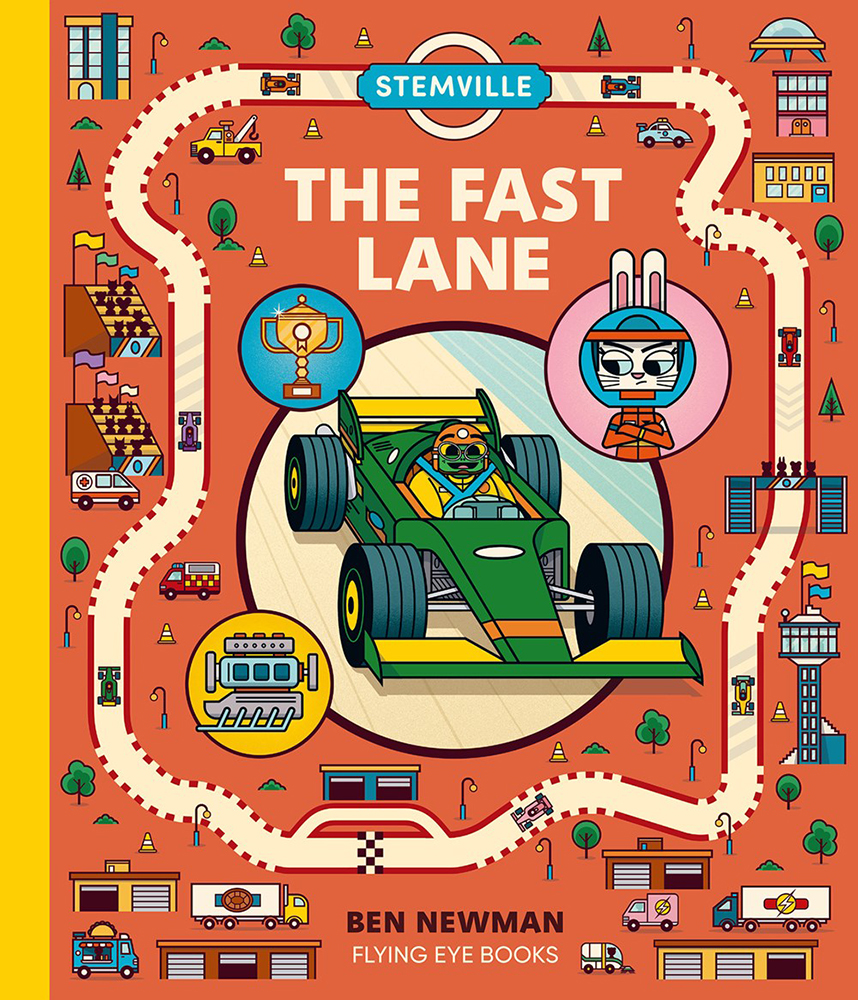
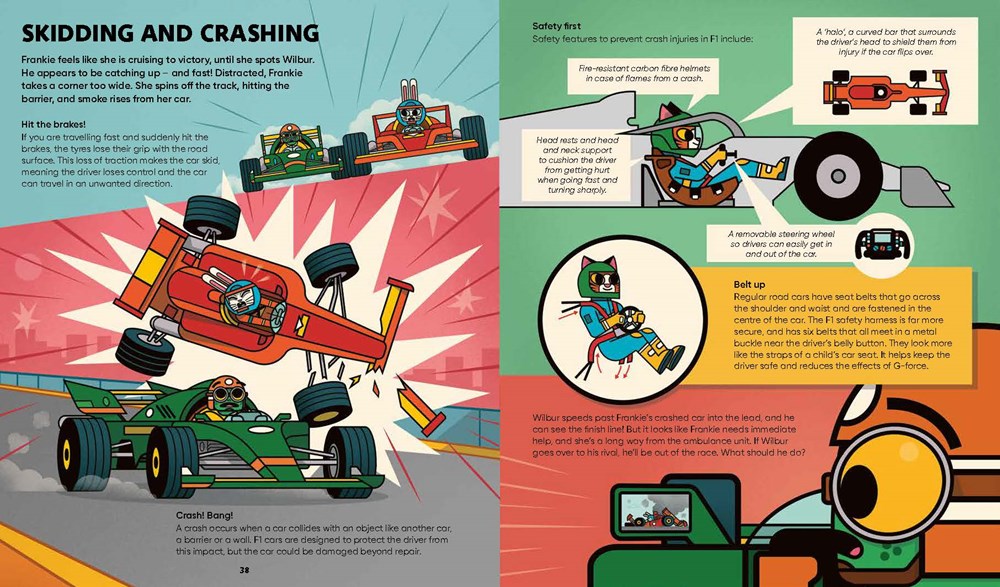
STEMville: The Fast Lane, by Ben Newman (Flying Eye Books) — STEM / STEAM, Technology / Inventions, Construction / Transportation, Sports / Games / Recreation, ages 7-12.
The annual Big Race has arrived in STEMville!
Gather around the track to watch the town’s contestants compete to become this year’s champion. Frankie Thunderfoot comes from a family of confident trophy winners, while Wilbur Hardshell’s race team are slow, steady, and mathematical in their approach. When Frankie’s need for speed causes her to crash, Wilbur must decide whether he should forfeit his position to help her or secure first place for himself. Learn all about how race cars are built and how they work, from acceleration to g-force and quick-fire pit stops.
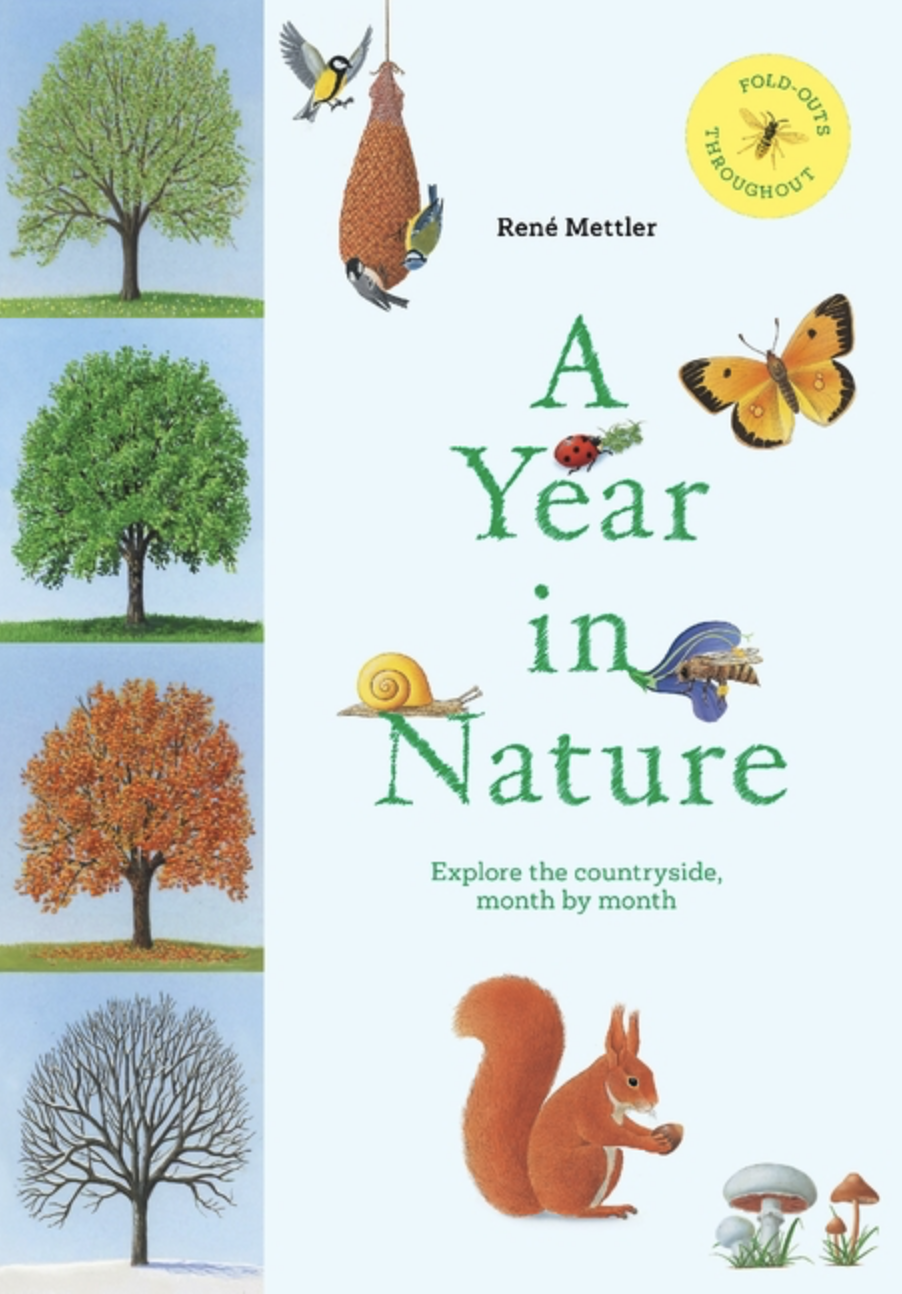
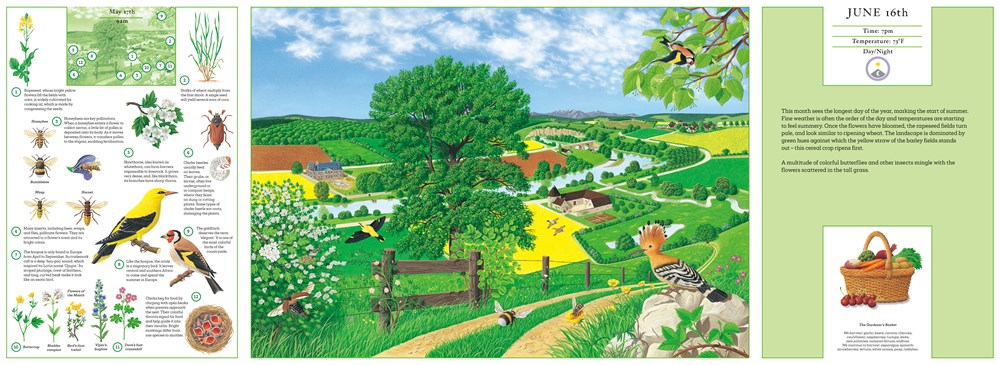
A Year in Nature, written & illustrated by Rene Mettier (Post Wave) — Science / Nature, Environment / Sustainability / Recycling, Holidays / Seasons / Celebrations, Facts / Trivia, ages 7-12.
Journey through a year in the charming countryside, observing its changing seasons, plants, and animals.
Discover why the seasons change and how creatures like foxes, mice, and birds adapt to the shifting environment, from frosty winter nights to golden summer days.
With big, fold-out pages and plenty of facts, readers will explore the natural world in fascinating detail. They will also learn which plants and animals come and go through the year, how temperature and daylight shifts, and some of the fruits and vegetables that are harvested throughout the year. A Year in Nature is a captivating and beautifully illustrated journey through the changing seasons, month by month.
For more great book suggestions, be sure to check out the full March Hot Off the Press list!
List compiled by CBC’s resident book connoisseur, Brooke Pisarsky. Check out other Hot Off the Press Spotlight book lists on our blog.



